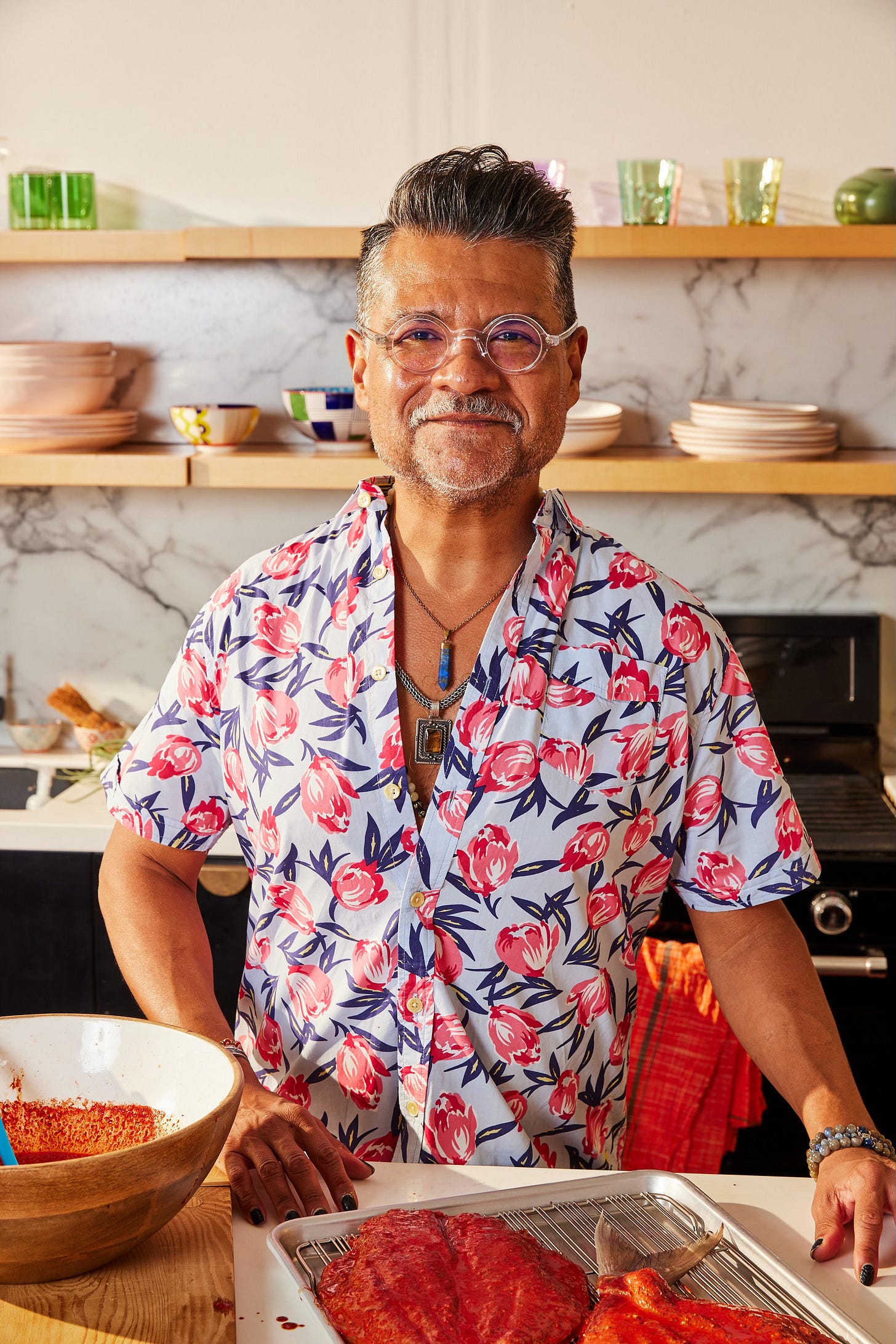Take Baby Steps Toward Self-Liberation, says Cookbook Author Rick Martínez
How the former chef and editor developed his strong voice, identity and self-confidence that make his cookbooks sell.

Don’t underestimate cookbook author Rick Martínez. He is way more than a fun guy with pretty nail polish.
His first cookbook, Mi Cucina: Recipes and Rapture from My Kitchen in Mexico: A Cookbook, won Cookbook of the Year from the International Association of Culinary Professionals (IACP) and Best International Cookbook from the James Beard Foundation. It was a New York Times and Los Angeles Times bestseller. (His second cookbook, Salsa Daddy: A Cookbook: Dip Your Way into Mexican Cooking, appears to be selling like mad on Amazon, since debuting in April.)
By the time he wrote his first cookbook, he had:
graduated from culinary school
worked as a line cook at a restaurant in New York
freelanced for the Food Network as a food stylist and
spent five years at Bon Appetit as a senior food editor.
So yeah, Rick had the chops out of the gate! I met him at San Francisco’s Omnivore Books, where he was in town to promote Salsa Daddy.
Cookbook number two is even more flamboyant than his first: full of startling pinks, blues, yellows and reds. There’s a full-page photo of tan Rick in a revealing caftan (the Aztec pattern of his robe appears on the end pages). Another shot shows him in a hot tub, sporting red fingernails that hold a cocktail. The book has lots of attitude, namely, “Let’s have fun, and I will show you a few things you will love.” The table of contents starts with his easy dishes and works up to the more complicated ones — and, since he wants all kinds of home cooks to make his recipes —the recipes all fit on one page.
More importantly, both books showcase a unique voice and personality, both visually and in the text. If I tore out a page and showed it to you, you’d recognize who wrote and designed it. Rick produced the second cookbook himself, a victory of creative control.
Here’s Rick on what he learned by being a chef, working at a national food magazine, from his work in advertising, and by advocating for himself as a content creator:
Q. When did you start writing about food?
A. At Bon Appetit.
Q. How did you get your job there, from 2015 to 2016?
A. I had a friend when I went to culinary school with who is now a cookbook author. Jess Damuck was an assistant editor at Bon Appetit. She put me in touch with (then Bon Appetit Food Director) Carla Music. There was an editorial test and a cooking test, and then I got the job.
Q. What did you have to cook?
A. I had to cross-test a bunch of recipes, and there was one I had to fix. It was Bing bread. Someone had written into the magazine, asking for the recipe. The restaurant sent in their restaurant-size version, and I had to convert it to a home cook version. I converted the custom dishware they were serving it in into a skillet, so home cooks could cut it into four servings.
Q. What did you learn about food writing at Bon Appetit?
A. Everything. One of the most valuable lessons was how to work with an editor. In advertising, one of my roles was in consumer research and strategy. I wrote papers in advertising for clients and the agency. I wrote about target audience and trends. There was no editor to check anything and make comments.
Some of the editors I worked with were some of the best. Like Alex Beggs. She was a huge salsa fan of mine at Bon Appetit, and I hired her as my editor for Salsa Daddy. That relationship between author and editor is so important, whether for The New York Times or a manuscript. Understanding what that relationship is and should be is invaluable.


